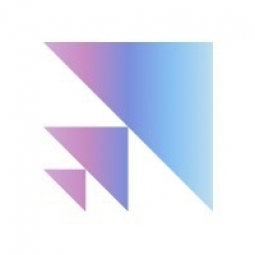下载PDF
Enhancing Pick-and-Place Robots with Annotations from Scale Rapid
技术
- 分析与建模 - 机器学习
- 传感器 - 全球定位系统
适用行业
- 水泥
- 电子商务
适用功能
- 维护
- 质量保证
用例
- 自主机器人
- 施工管理
服务
- 系统集成
- 培训
挑战
Ambi Robotics 为客户提供人工智能驱动的机器人系统,使他们能够扩大运营规模并应对不断增长的供应链需求。该公司的机器学习(ML)系统负责识别物体及其位置,并将机器人手移动到该位置以抓取物体。拾取成功率,即机器人成功拾取物体的频率,是成功的最重要标志。然而,Ambi Robotics 在获得高质量数据注释方面面临挑战,这对于改进模型至关重要。最初,该公司在内部管理注释流程,但这种方法无法根据他们所需的数据量进行扩展。在与新客户和新地点合作时,Ambi Robotics 有时会发现拾放成功率较低,仅仅是因为环境看起来不同。提高性能的最佳方法是从新位置挖掘数据,对其进行注释,然后重新训练 ML 模型。然而,该公司缺乏定期处理如此大量数据的基础设施。
关于客户
Ambi Robotics 是一家为客户提供人工智能驱动的机器人系统的公司,使他们能够扩大运营规模并应对不断增长的供应链需求。他们的技术被用于整个电子商务行业的物流仓库,以自动化提取包裹、扫描条形码并将其发送到正确位置的过程。该公司的机器学习 (ML) 系统不仅负责识别物体及其位置,还负责将机器人手移动到该位置以抓取物体。对于这些客户来说,拾取成功率(机器人成功拾取物体的频率)是最重要的成功标志。
解决方案
Ambi Robotics 与 Scale Rapid 合作外包数据注释流程,使他们能够快速获得改进机器学习模型所需的注释。 Scale Rapid 提供了一种简单的分步方法来设置注释流程,使客户可以在几分钟内轻松设置新任务。为了提供高质量的数据,Scale Rapid 通过批量注释将质量评估构建到其管道中。他们生成校准数据集来识别标签说明中的差距,直到客户对数据校准感到满意。校准完成后,Scale Rapid 为客户生产批量产品。 Scale Rapid 还缩短了 Ambi Robotics 的交货时间。虽然 Ambi Robotics 的内部注释流程有时可能需要数周时间,但 Scale Rapid 始终能在 1-2 天内提供可投入生产的结果。 Scale Rapid 提供的结果与其内部注释始终处于同一水平,同时使用强大且可扩展的基础设施生成。
运营影响
数量效益
相关案例.

Case Study
System 800xA at Indian Cement Plants
Chettinad Cement recognized that further efficiencies could be achieved in its cement manufacturing process. It looked to investing in comprehensive operational and control technologies to manage and derive productivity and energy efficiency gains from the assets on Line 2, their second plant in India.

Case Study
Digital Transformation of Atlanta Grout & Tile: An IoT Case Study
Atlanta Grout & Tile, a Tile, Stone & Grout restoration company based in Woodstock, Georgia, was facing challenges with its traditional business model. Despite steady growth over the years, the company was falling behind the web revolution and missing out on the opportunity to tap into a new consumer base. They were using independent software from different vendors for each of their department information and workforce management. This resulted in a lot of manual work on excel and the need to export/import data between different systems. This not only increased overhead costs but also slowed down their response to clients. The company also had to prepare numerous reports manually and lacked access to customer trends for effective business decision-making.

Case Study
Revolutionizing Construction Equipment Rental: A Case Study on ProsRent and ENO8
ProsRent, a startup that won the 'Best Financial Opportunity' and 'Best Pitch' at CodeLaunch 2016, aimed to revolutionize the way construction professionals source and rent heavy equipment. In the construction industry, project managers and contractors typically rent heavy equipment from supply companies. However, predicting inventory can be challenging, and finding the required equipment at the right time and place can be a hassle. If the preferred vendor doesn't have the required equipment, it results in wasted time and money in searching for it, often leading to higher costs due to non-preferred rates and increased delivery costs if the vendor is located far from the job site. Suppliers, on the other hand, desired access to a wider base of trusted renters that they didn't have to vet themselves and wanted to offer dynamic rental pricing based on demand and availability in their market. ProsRent's challenge was to produce a minimum viable product that was fast and first to market but also strong enough to engender loyalty and repeat business from the target market.

Case Study
IoT Solution Enhances Comfort and Energy Efficiency at Apple Valley Commons Office
Apple Valley Commons, a mixed-use office complex built in 1986, was facing significant comfort and energy efficiency challenges. The building, which houses a variety of businesses, was experiencing extreme temperature imbalances, causing discomfort to employees and clients. Despite outdoor temperatures being consistently high during summers, occupants had to use space heaters to keep warm. The electricity bills from the constant operation of the heat pump were exorbitant. The building's elevator room on the roof was also overheating, reaching temperatures of 130 to 140 degrees, causing the elevator equipment to shut down. The building's existing controls solution did not provide a front end for diagnostics or remote control. The building management was seeking a solution that could address these temperature issues, improve occupant comfort, reduce operational costs, and increase building visibility.

Case Study
Revamping EE's Legacy ERP: A Case Study on BT's Strategic Transformation
EE, even after its merger with BT, was operating its ERP estate on legacy infrastructure, hosted on the premises of a third-party supplier. This outdated system resulted in a volume-based operational model, higher time to market, longer delivery cycles, and unsatisfactory customer experience. BT recognized the need for a strategic transformation of these aging ERP systems and sought a partner who could proactively manage application services. The partner was also expected to handle development requirements associated with application management services, drive accountability, and ownership with a time and target-driven transformation of these services. BT's primary goals were to improve customer experience, reduce cycle time, and measure these improvements with precision.






